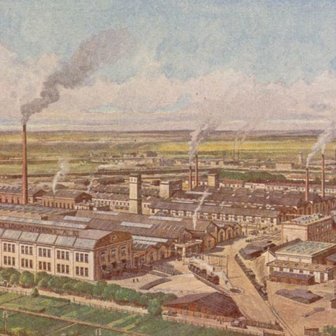ON THE INDUSTRIAL HISTORY OF AUSTRIA
On the one hand, Austria possessed all the prerequisites for industrialisation: plentiful natural resources, particularly iron ore and salt, and a long mining tradition. The Celts, for instance, developed underground salt mining to a proto-industrial level long before the Common Era. And in the late Middle Ages, tens of thousands of miners were extracting silver and copper ore.
On the other hand, the mountainous terrain impeded trade and travel. Nor could Trieste, the only sizeable port of the Habsburg Empire, develop into a first-class trading centre on the northern rim of the Mediterranean. Additionally, the nation’s elite were still trapped in a feudalistic mind-set until well into the 19th century.
Thus, the new era did not dawn until 1830, later and more haltingly than in many parts of Western Europe. The construction of the railway system played a decisive role: starting in the mid-1850s, the Kaiser Ferdinand Northern Railroad provided services from Vienna to Prague via Brünn, with a branch to Galicia. The Südbahn, or "Southern Line", ran via Laibach to Trieste; the Semmeringbahn, Europe’s first mountain railway, formed one section of this. The development of the polytechnic schools in Vienna and Prague into technical universities as early as 1815 proved to be a farsighted act.
The industrialisation of the Habsburg Empire originated primarily in the non-Austrian regions: Hungary’s development stagnated, as it produced only agricultural goods, but coal mining and textiles in Moravia and the innovative heavy industry of Bohemia became drivers for economic and technical progress. However, industrialisation there brought with it a heightened Czech nationalist awareness and sharpened the conflicts within this heterogeneous country.
In the territory of today’s Austria, the economic transformation did not gain momentum until the so-called "Gründerzeit", the era of rapid economic expansion in German-speaking Europe, dawned in the 1860s. Until then, wood from the dense forests and Austria’s mountain streams had delivered sufficient energy, but now more factories were being built and businesses were forced to switch to coal, the classic fuel of industrialisation. Upper Styria developed into an industrial core region, where Karl Wittgenstein, "Austria’s Krupp", formed the established mining and iron-working operations into a powerful cartel. Textile production developed in the Vorarlberg region, and in Vienna – where the Rothschilds founded the merchant bank "Credit-Anstalt für Handel und Gewerbe" in 1855 – the manufacturing of rail cars and locomotives flourished in particular. The Vienna International Exposition of 1873 stood as a symbol for this development – even though shortly after its opening a "Black Friday" stock market crash occurred that triggered a depression that lasted many years.
In a second boom toward the end of the century, motor vehicle manufacturing emerged in and around Vienna; particularly with the founding of the Österreichische Daimler-Motoren-Gesellschaft in 1899, which supplied all branches of the new motorised transport and soon employed well over one thousand people. Howevere, the first car of K.u.K. (imperial and royal) Monarchy was built in Moravia in 1888. As in Western Europe an electrical industry emerged, also centred on Vienna, and electric and gas transmission infrastructure was built around the country. Further important sectors to emerge included the food industry, particularly sugar manufacturing from beet, and paper production, which was boosted by the vast forests of this Alpine country.
Concurrently, industrial working conditions gradually improved, working time was capped at 11 hours and health and accident insurance was introduced. However, the national and municipal governments did not address the acute housing shortage until the 1920s in the form of construction projects such as the famous Viennese "Arbeiterhöfe". By then, the promising economic upswing of the turn of the century was already history, a casualty of the destruction of the First World War and the subsequent breakup of the Habsburg Empire.


